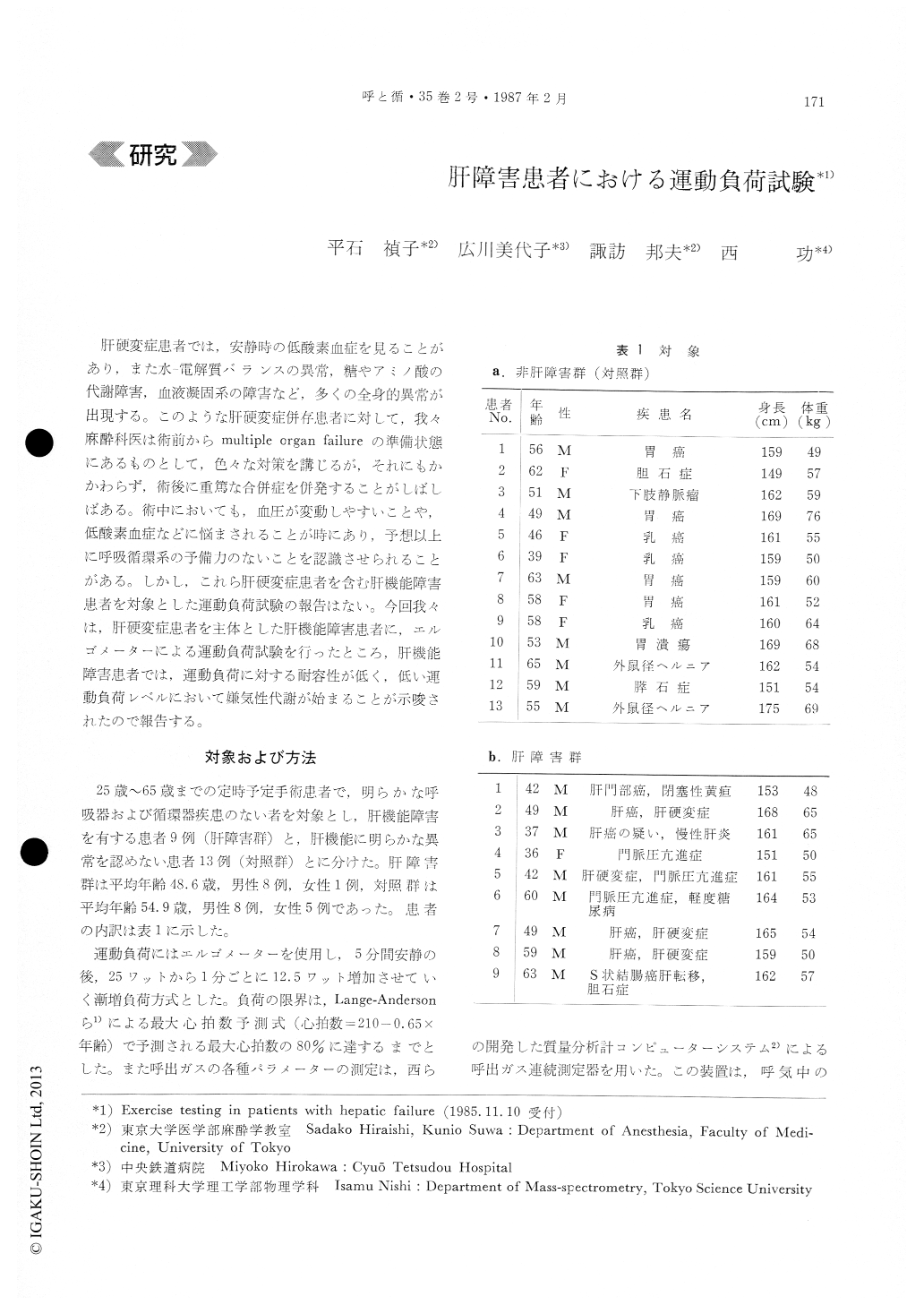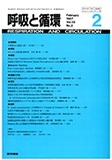Japanese
English
- 有料閲覧
- Abstract 文献概要
- 1ページ目 Look Inside
肝硬変症患者では,安静時の低酸素血症を見ることがあり,また水-電解質バランスの異常,糖やアミノ酸の代謝障害,血液凝固系の障害など,多くの全身的異常が出現する。このような肝硬変症併存患者に対して,我々麻酔科医は術前からmultiple organ failureの準備状態にあるものとして,色々な対策を講じるが,それにもかかわらず,術後に重篤な合併症を併発することがしばしばある。術中においても,血圧が変動しやすいことや,低酸素血症などに悩まされることが時にあり,予想以上に呼吸循環系の予備力のないことを認識させられることがある。しかし,これら肝硬変症患者を含む肝機能障害患者を対象とした運動負荷試験の報告はない。今回我々は,肝硬変症患者を主体とした肝機能障害患者に,エルゴメーターによる運動負荷試験を行ったところ,肝機能障害患者では,運動負荷に対する耐容性が低く,低い運動負荷レベルにおいて嫌気性代謝が始まることが示唆されたので報告する。
Exercise testings using an ergometer were performed on 21 preoperative patients. They were composed of two groups, patients with hepatic failure (hepatic failure group, n=9) and those without hepatic failures (control group, n=12).
The testing started with the load of 25 W/h, and the load was increased by 12. 5W/h every minute, until the heart rate of the patient reached the 80% of the expected maximum.
Oxygen consumption rate (VO2), expired gas volumes/ minutes (VE) and the heart rate (HR) were measured and the anaerobic threshold was determined. Results indicate,
1) The ratio of VO2 to VE of the hepatic failure group was only 85% of that of the group, and this was mainly due to the high VE at the restig state in the hepatic failure group.
2) In the hepatic failure group, the ratio of VO2 to VE reached a maximum point with a relatively low load, meaning that anaerobic thresholds of the hepatic failure group were much lower than those of the contol group.
3) The ratio of VOz to HR for each additional load and the maximum exercise level tolerable in the hepatic failure group, were considerably lower than those in the control group.
From these findings, we conclude that, in patients with hepatic failures, the anaerobic metabolism takes place at a very low level of exercise load. Furthermore, the aerobic metabolism appears inhibited either due to hepatic dysfunction or due to hypoxemia, seen often in patients with severe hepatic failure, such as liver cirrhosis.

Copyright © 1987, Igaku-Shoin Ltd. All rights reserved.


